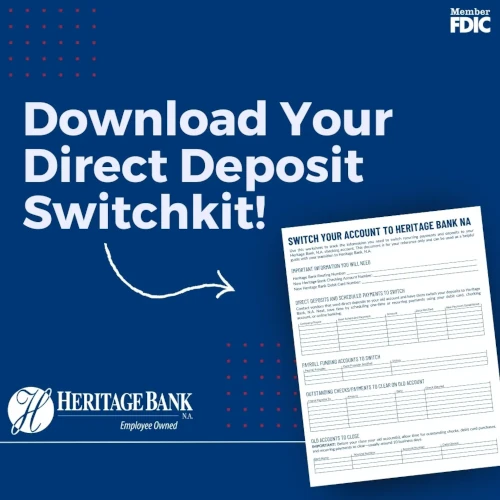How do I switch banks?
If you’re like most people, you’ve probably experienced a bank with poor customer service. If repeated offenses occur, you will consider switching banks. Knowing how to switch banks will make the process much easier.
Switching banks might seem daunting, especially if you’ve been with your current bank for a long time. However, the process can be straightforward and hassle-free with the right information and some planning. In this blog post, we’ll guide you through the steps to switch banks, address the advantages of knowing how to switch banks and highlight the significant benefits of making the change.
Is it easy to switch banks?
Many people hesitate to switch banks because they fear the process will be complicated and time-consuming. The reality is that switching banks has become increasingly streamlined, thanks to technology and improved banking services.
Here’s how you can switch banks with ease:
1. Open a New Account
Once you decide to bank with us, visit our website or branch to open a new account. You’ll need to provide personal information, such as your name, address, Social Security number, and identification.
2. Transfer Funds
Before closing your old account, make sure to transfer all funds to your new account. You can do this through online banking, visiting a branch, external transfers by linking your accounts, wire transfers, checks, apps, etc.
3. Update Automatic Payments and Direct Deposits
Don’t forget to update any automatic payments, direct deposits, or linked accounts to your new account information. This includes bills, subscriptions, and any other recurring payments.
4. Close Your Old Account
Once everything is set up and all transactions have cleared from your old account, it’s time to close your old account. You can do this online, over the phone, or by visiting a branch.
Advantages of Knowing How to Switch Banks
Knowing how to switch banks reduces confusion and makes the process more worthwhile. Being familiar with the steps to take and what to expect will help make the move easier and less stressful. By knowing how to switch banks, you can expect the following:
- Saves Times: You’ll know which documents to acquire, forms to complete, and who to contact, streamlining the process and reducing unnecessary delays.
- Minimizes Disruption: Understanding how to switch banks allows you to proactively plan the transition, reducing disruptions to your banking activity. You can schedule account closures and transfers to guarantee that you have continuous access to your funds during the process.
- Maximizes Benefits: Understanding the intricacies of switching banks allows you to make the most of the switch. You may take advantage of promotional offers, select accounts with the best features, and avoid potential pitfalls like hidden fees or service restrictions.
- Avoids Problems: Understanding the process can help avoid problems such as missing automatic payments or direct deposits. Being aware of frequent issues enables you to address them proactively, lowering the risk of complications during the shift.
- Preserves Credit Score: Switching banks requires closing old accounts and starting new ones, which can have an influence on your credit score if not handled properly. Working with a Heritage Bank banker who knows how to help you move banks without harming your credit score guarantees that you stay financially healthy throughout the process.
- Empowers Yourself: Learning how to switch banks allows you to take control of your finances. Instead of feeling stuck by inadequate banking arrangements or poor customer service, you have the information and confidence to look into different solutions that better meet your requirements and preferences.
- Financial Literacy: Having knowledge about switching banks improves your general financial literacy. It acquaints you with terminology, practices, and policies related to banking, providing you with essential information that goes beyond the general process of transferring banks and ultimately enhances your financial security.
Significant Benefits of Switching Banks
- Switching banks allows you to reassess your financial situation and reset your budget. When you switch, you can review all your automatic debits and bill payments, helping you identify unnecessary expenses and create a more efficient budget.
- Switching banks can lead to better interest rates, lower fees, improved customer service, and access to new banking features and technologies. By taking the time to switch banks, you could potentially save money and enjoy a better banking experience.
Download our Switch Kit
If you’re considering switching to Heritage Bank NA and want to make the transition as smooth as possible, we’ve created a Switch Kit that includes a checklist detailing the process of switching banks. It also includes a worksheet to help you manage your finances during the transition.

Ready to make the switch? At Heritage Bank NA, we offer a few Personal Banking deposit account options designed to meet your financial needs. Explore our deposit accounts and make the switch today!
Don’t hesitate to reach out to our team if you have any questions or need assistance on how to switch banks. We’re here to help. Call us Toll-Free – 1-800-344-7048






